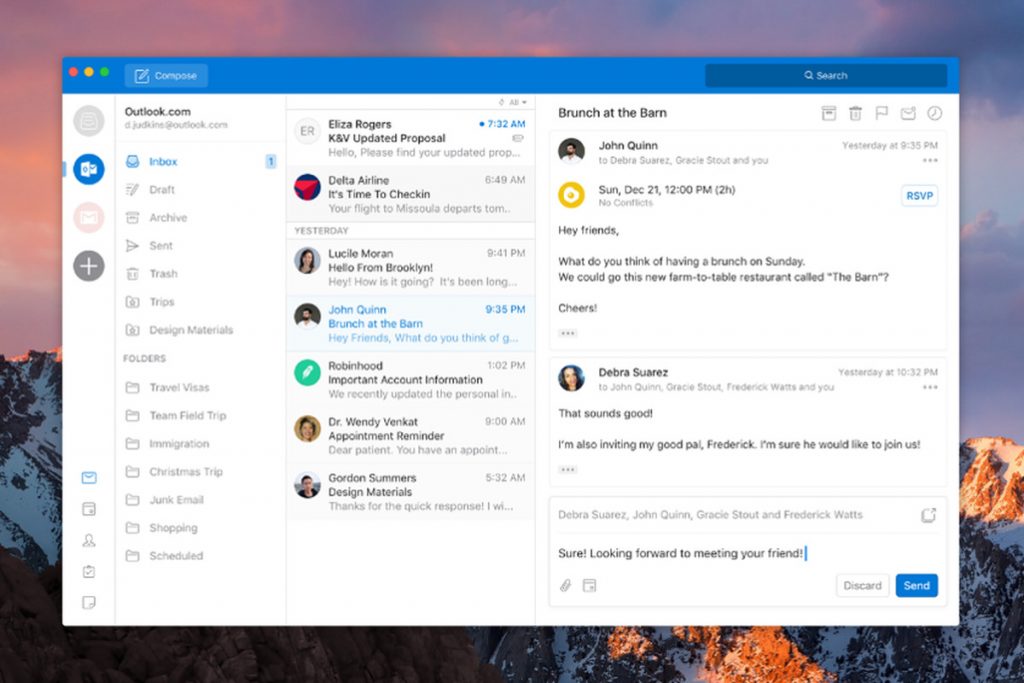
Microsoft is currently making a major design change to the Outlook for Mac, with the aims to simplify the user interface and to make it in accordance with the iOS version.
Outlook for iOS has been redesigned this July. The new design direction in Mac version borrows from the iOS version. The modifications in the Mac version is said to be similar to the changes in the iOS app, in terms of visual and UX changes, to reduce the complexity of the app. Mac users have been complaining the interface design of Outlook for Mac. Microsoft has recognized the importance of the Mac platform, and admitted that they need to deliver the best Outlook has to offer to win ‘key influencers and decision makers’.
Now the new version follows the common design principles for Mac software and presents in a similar way to other email apps on macOS. The key changes includes a single-line ribbon and a smaller set of default commands. It is reported that Mac users will be able to customize the ribbon with personal choice of buttons. And there is a navigation panel on the left side of the interface to allow users quickly access to folders with multiple accounts, which looks like the switcher in the iOS version. Besides, Outlook for Mac will use trackpad gestures, such as sliding to delete messages, to mimic the iOS UI.
Apart from the visual changes in user interface, Outlook for Mac adds some new features, including support for tables, rescheduling e-mails, an overhauled calendar interface, the swipe-on-the-touchpad-to-archive-an-e-mail feature, and support for saving e-mails to OneNote. The original Search feature will be faster and more reliable, and Calendar will be improved with fly-outs of information, and a better interface for managing appointments.
Microsoft is also working on Outlook on Windows platform. The company tends to apply different design sensibilities, rather than keep things unified across multiple platforms.
The new Outlook for Mac is currently in internal testing. Microsoft doesn’t reveal when the public version will be available, but it is expected to roll out first to Office 365 subscribers.